PLACES
Top 10 beauty spots
Create your own portfolio of stunning Instagrammable images at these picture-perfect UK locations
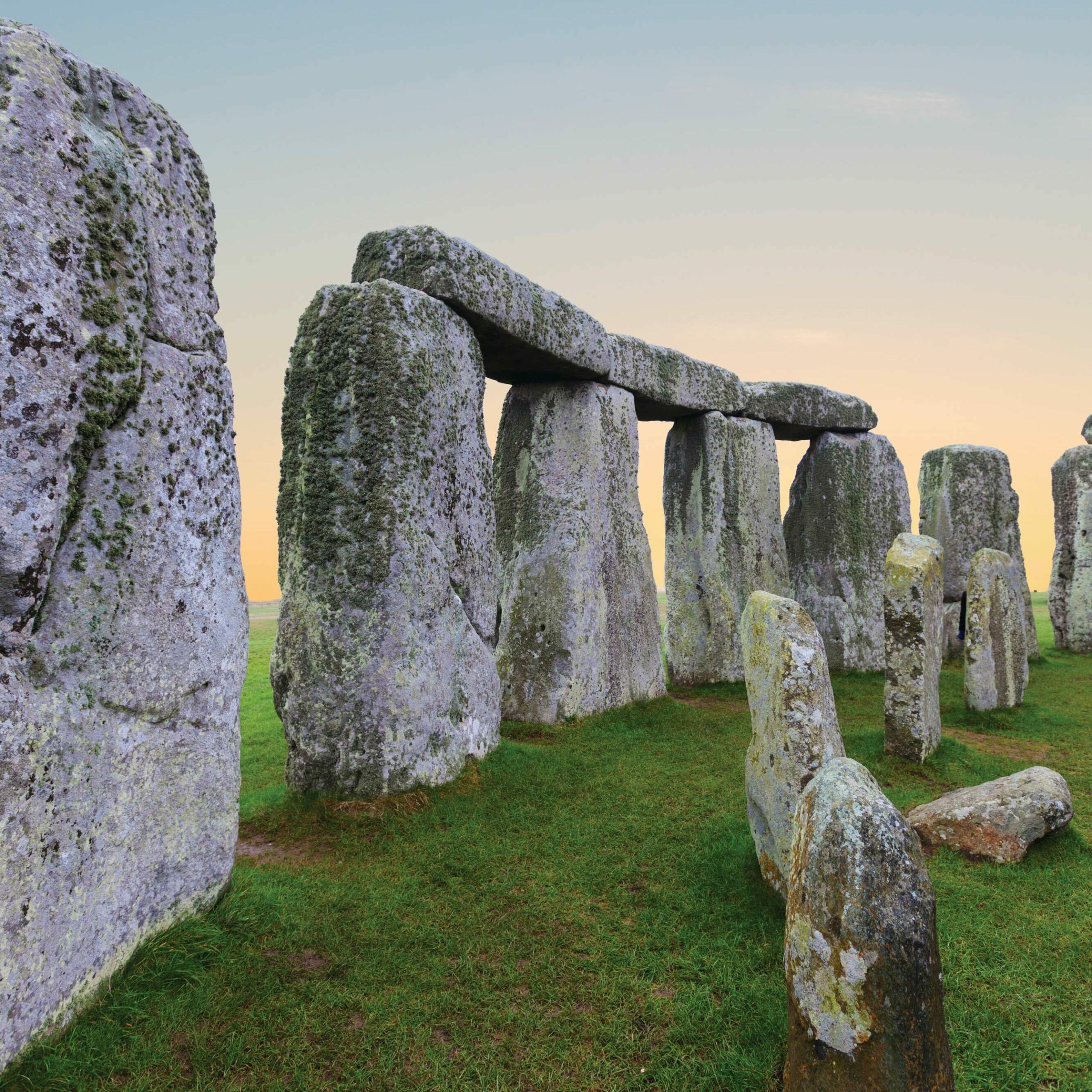
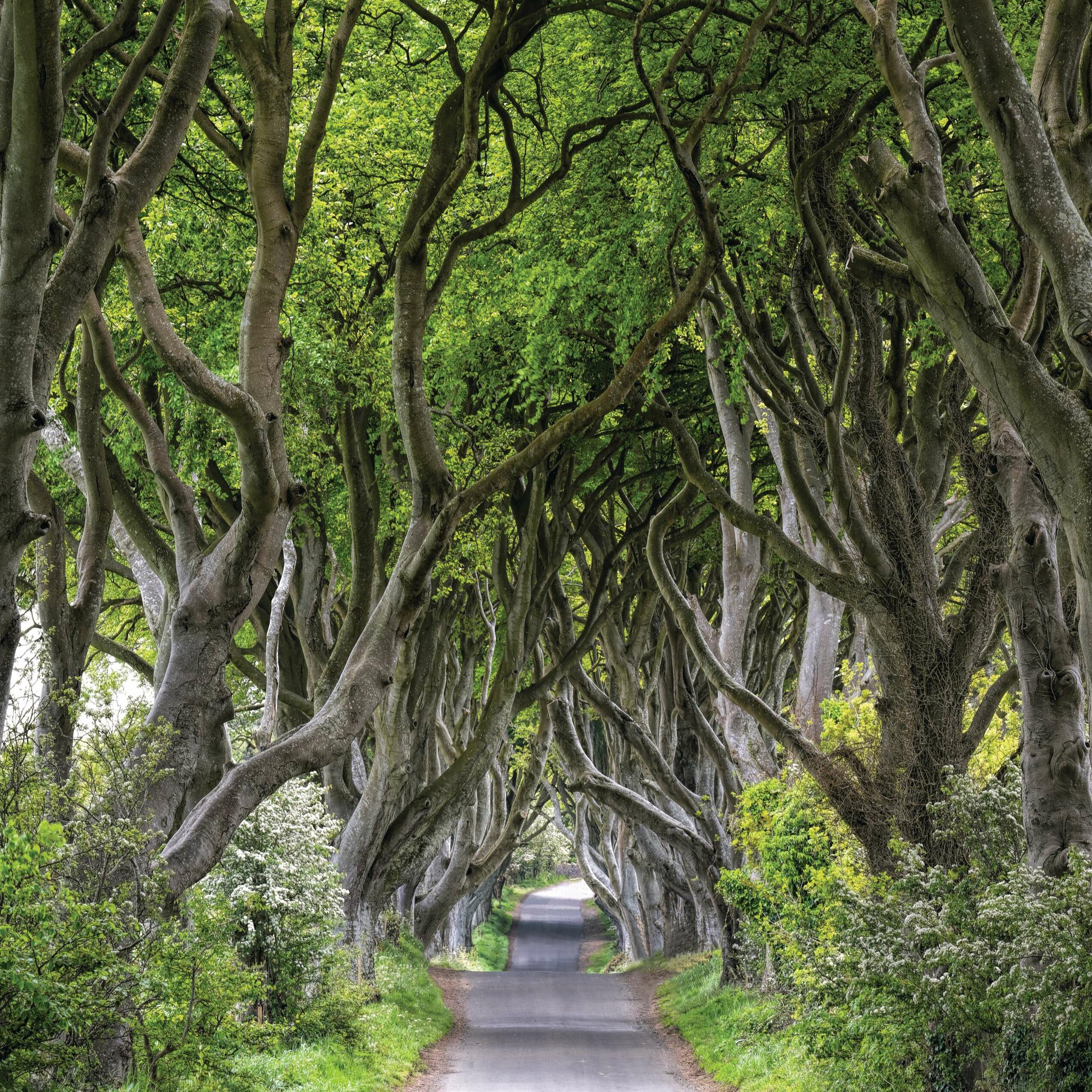


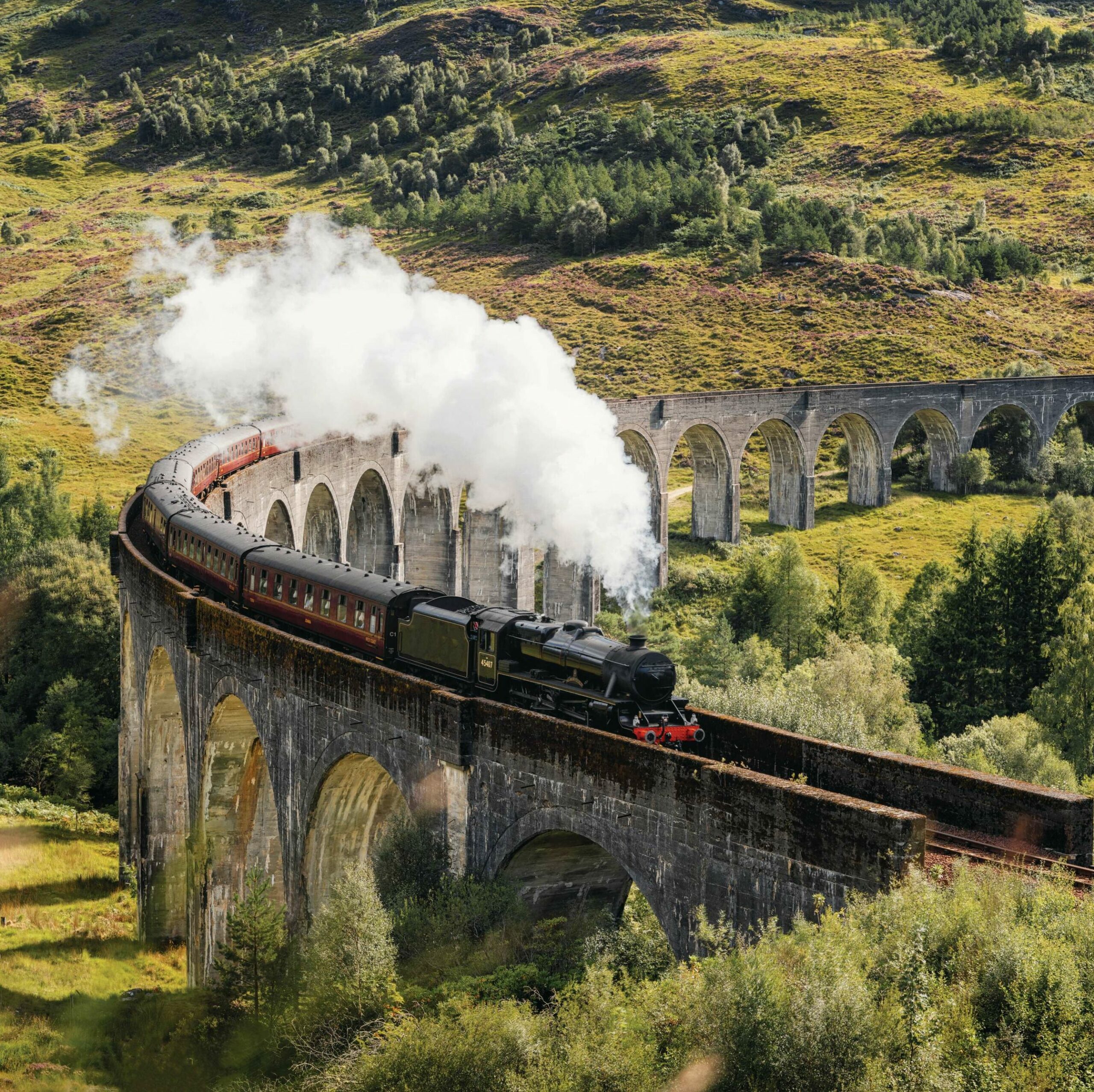

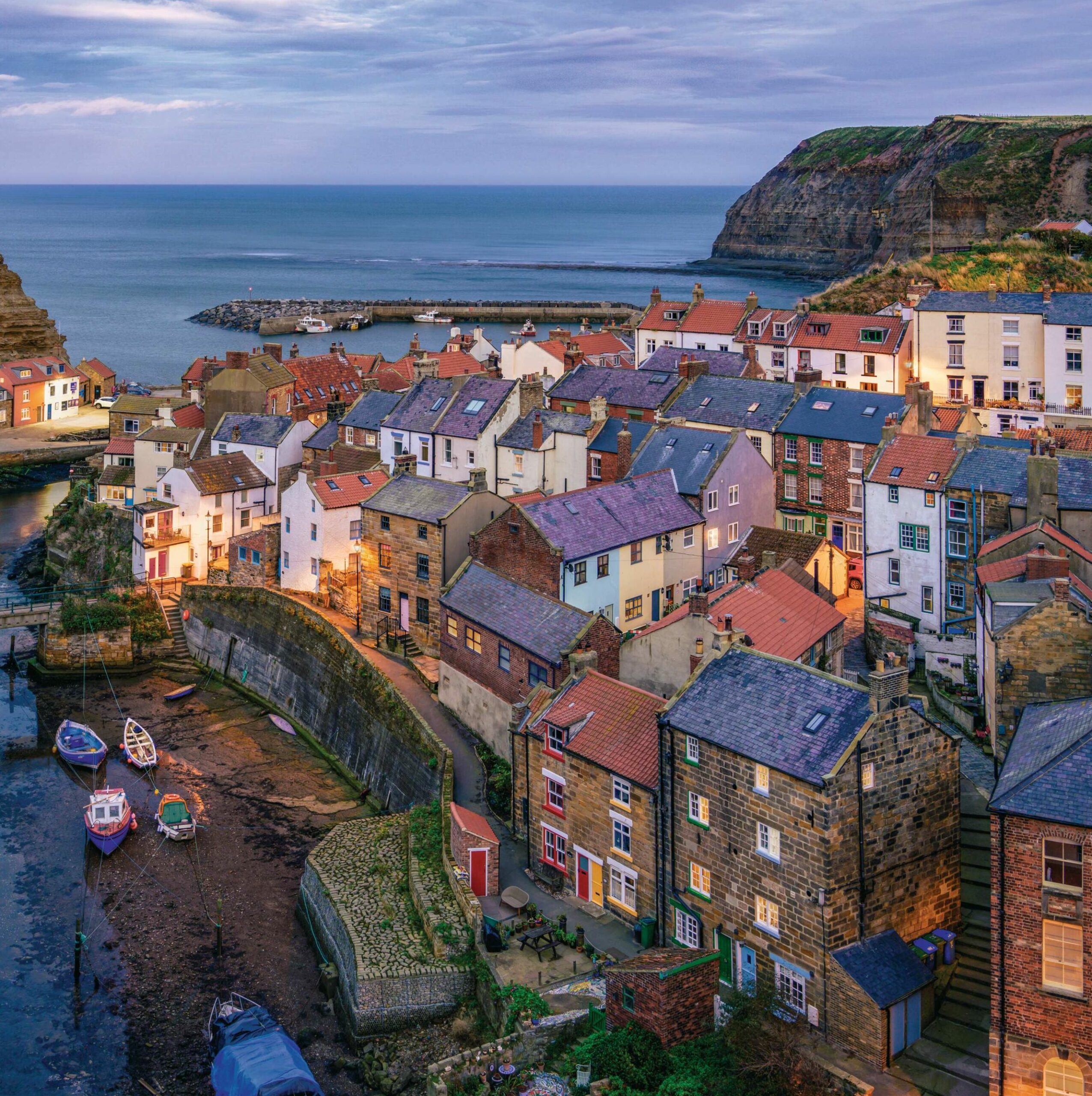


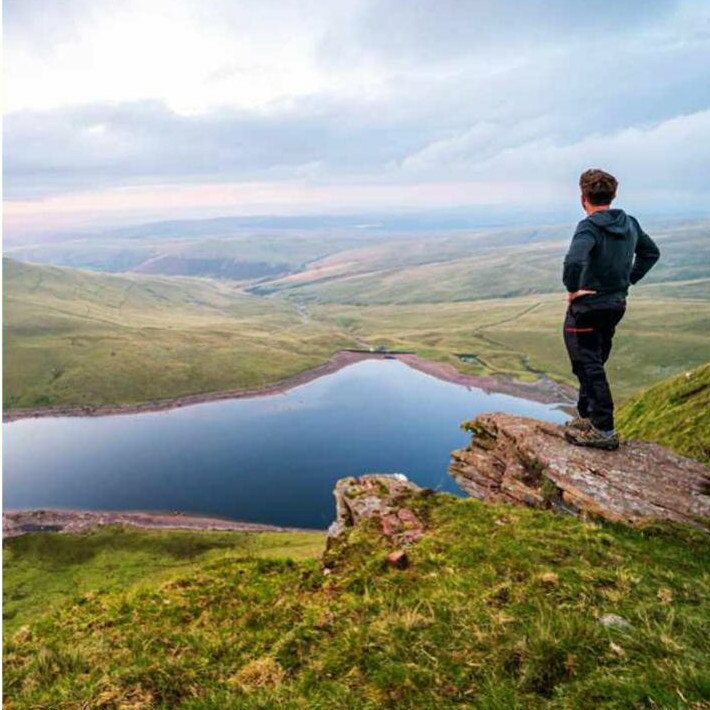
1 Kynance Cove, Cornwall
Spectacular sea stacks
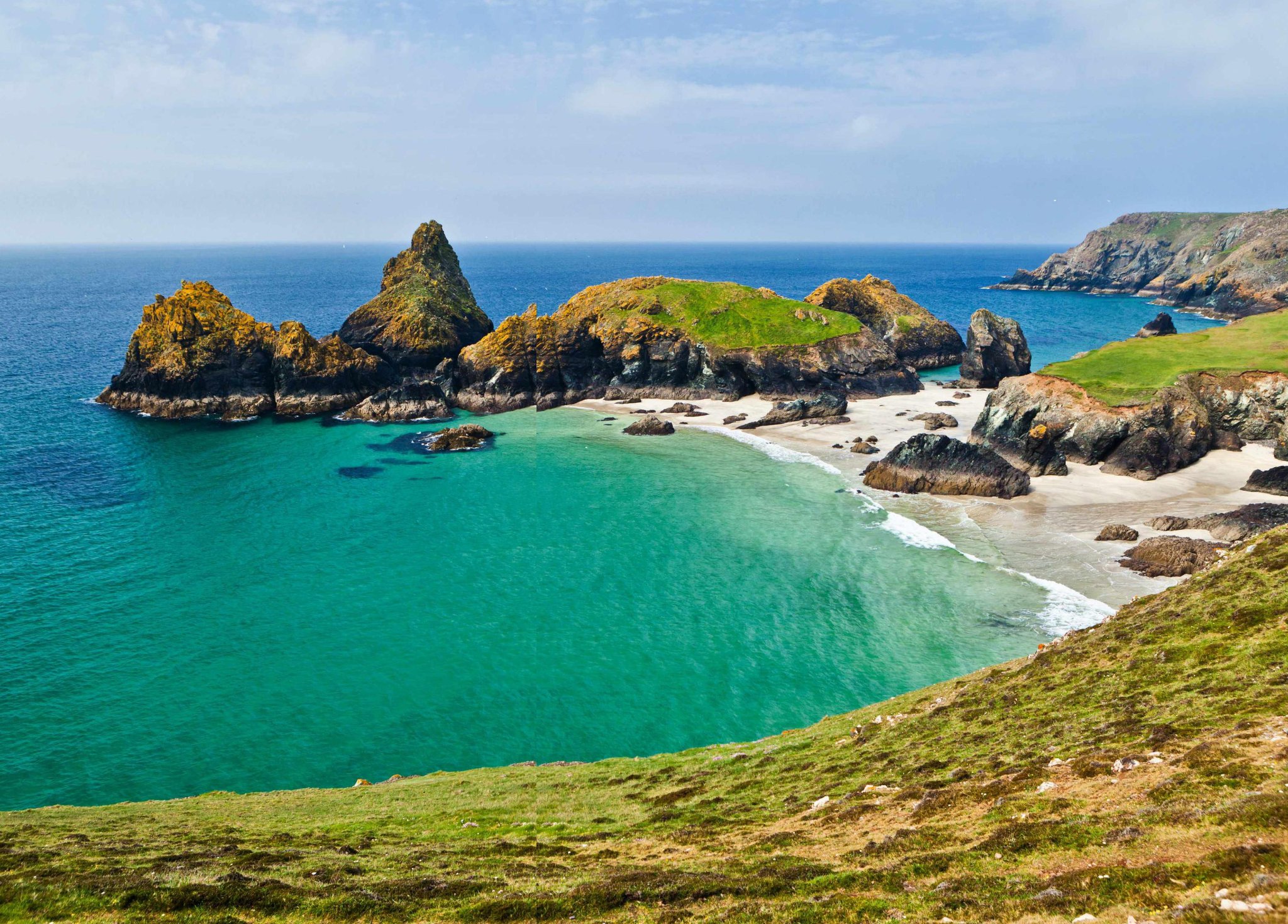
If you haven’t been to Kynance Cove but think you recognise it, it could be that you’re a fan of classic television drama. The bay on the western side of the Lizard Peninsula has served as Nampara in the more recent Poldark series, and appeared in popular televised productions of The Return of Sherlock Holmes and Agatha Christie’s And Then There Were None.
It’s no surprise that directors have been lured here. Kynance Cove’s dramatic jumble of stacks and miniature islands – some topped with emeraldgreen grass – look as though an angry giant has run amok on the coastline. Add in a cloth of stunning white sand and a rolling sea and you’ve got yourself a scene that will look spectacular no matter what angle you frame it.
At low tide, you can clamber around the stacks and explore mysterious caves with quaint names, such as The Drawing Room and The Ladies Bathing Pool. Just remember, if you venture around the cove, don’t get caught out by the swiftness of the incoming tide (there are no lifeguards).
A few miles along the coast is Britain’s most southerly tip. A dramatic finger of land poking out from Lizard Point with a cluster of buildings clinging to its slender ridge, it has made many a photographer happy.
Also nearby: Lizard Point Lighthouse (trinityhouse.co.uk) is crammed with interactive displays and interesting historical knick-knacks.
Useful info
• Opening hours: dawn to dusk.
• nationaltrust.org.uk
2 Puzzlewood, Gloucestershire
Go off-world
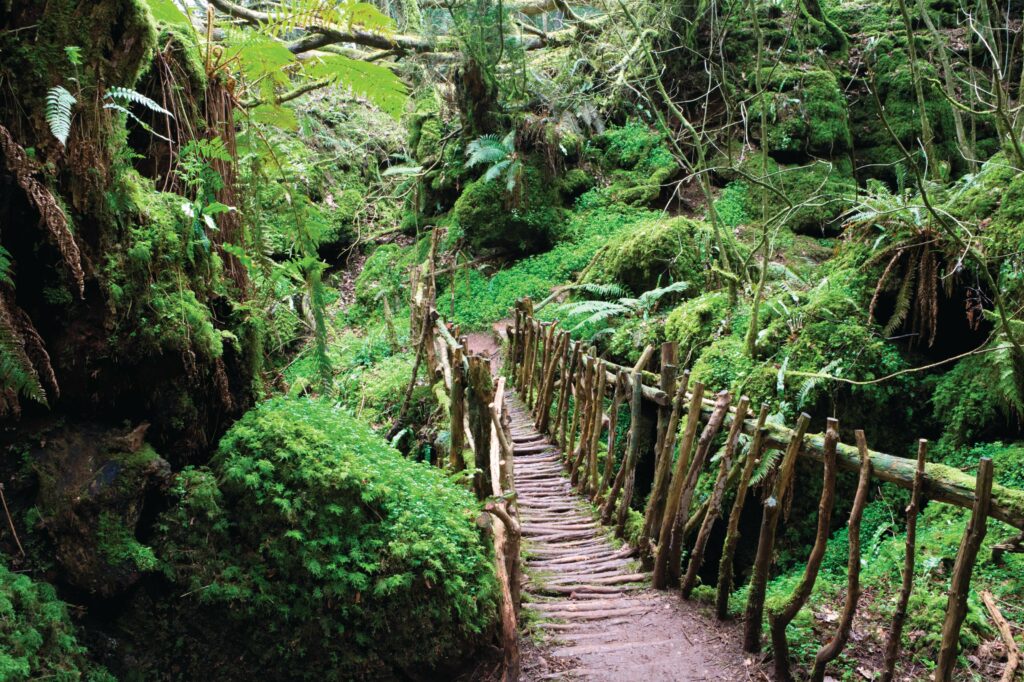
Over millions of years, in a process that is possibly unique to the Forest of Dean, limestone and sandstone caverns rich with iron ore were pushed to the Earth’s surface and exposed to the rain and wind. The Romans then came along and confused the landscape further by digging out the iron ore. The result is Puzzlewood, 5.6 hectares of curious rock formations and caves under a blanket of ancient woodland and copious carpets of moss.
It’s a wonderfully ethereal and atmospheric place inhabited by badgers, deer, foxes, owls and buzzards. It has also provided an otherworldly backdrop to scenes in Doctor Who, Star Wars, Merlin and numerous other films and TV dramas. You can explore it on a mile-and-ahalf of narrow labyrinthine paths created in the 19th century.
There are more than 200 steps that can become slippery in the rain so come appropriately shod. Also, the use of drones and tripods is not allowed.
Also nearby: Clearwell Caves (clearwellcaves.com) are nine artistically lit caverns.
Useful info
• Opening hours: 10–5 daily in Sept and Oct.
puzzlewood.net
3 Glenfinnan Viaduct, Inverness-shire
Film fame
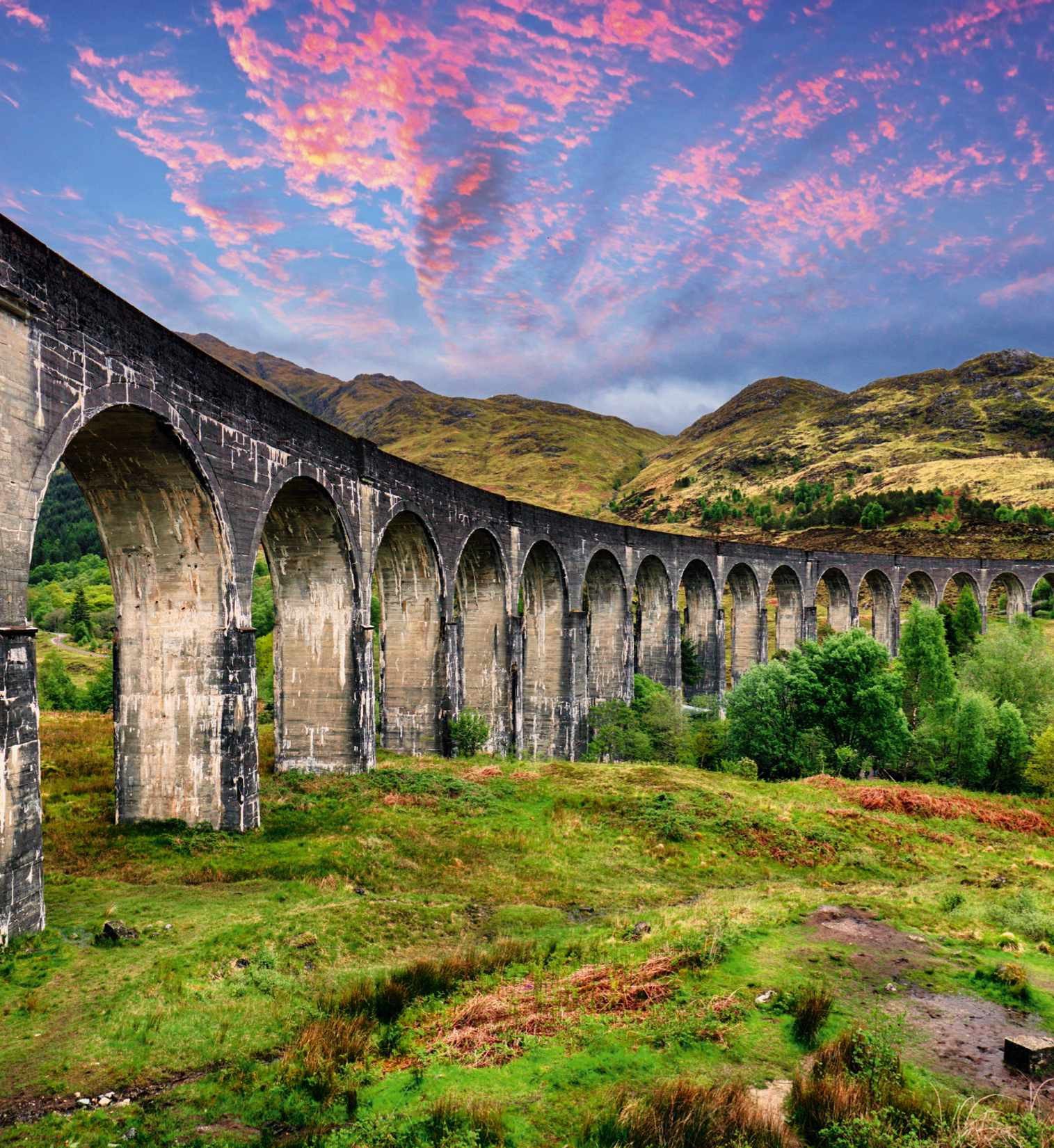
There was once a time when the Glenfinnan Viaduct was simply a scenic adjunct to some glorious Highland countryside – a place from which, on the train up to Mallaig, you could gaze contentedly down at the tall column of the Glenfinnan Monument and the end of Loch Shiel beyond. A certain boy wizard changed all that. It’s likely to be some time before the viaduct shrugs off the mantle of being ‘That one from the Harry Potter films’.
Completed in 1901 among a tight clutch of mountains, the viaduct took four years to build and passes 30m over the River Finnan. Its 381mlong curve encompasses 21 statuesque arches and is a masterclass in elegance. The achievement is all the greater because the viaduct is constructed from that often hard-to-love material, concrete (technically, it’s called mass concrete).
The favoured spot for taking photos of this gem is a little hummock on the lower slopes of Tom na h-Aire, just to the west of the viaduct. This is easily reached from Glenfinnan Station by following a path parallel to the railway line. If starting from the viaduct car park, head along a path beside the River Finnan, pass underneath one of the towering arches and along the Glenfinnan Trail. Then all you have to do is wait for a train.
Also nearby: The 360° view from Glenfinnan Monument takes in the viaduct and an expanse of Loch Shiel. The column commemorates the raising of the royal standard in Glenfinnan in 1745, when 1,200 Highlanders pledged ill-fated allegiance to Bonnie Prince Charlie.
Useful info
• nts.org.uk/visit/places/glenfinnan-monument
4 Stonehenge, Wiltshire
A world-class heritage site
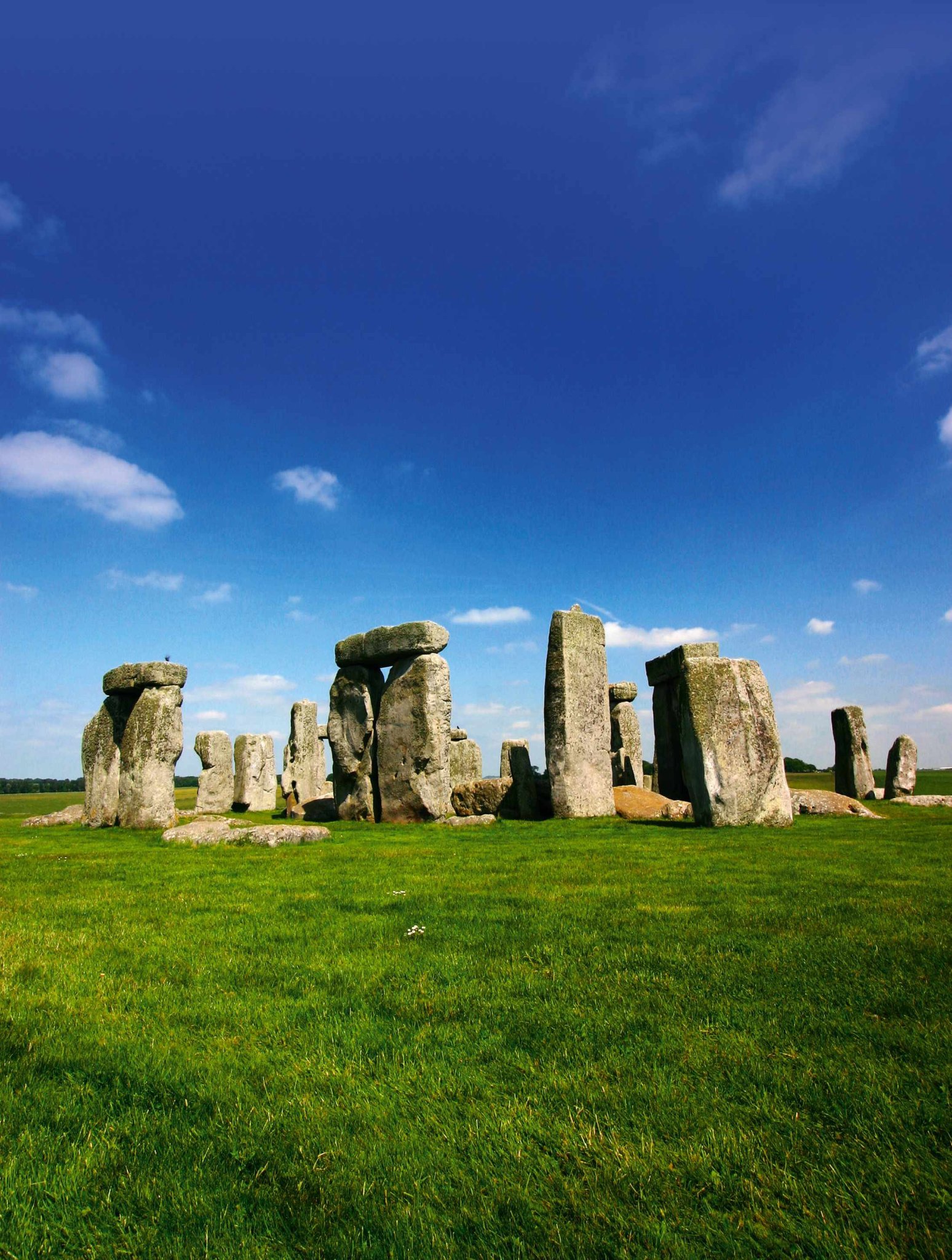
Among the world’s most instantly recognisable sites, Stonehenge is one of those rare places that truly merits being described as ‘iconic’. Beneath the wide-open skies of Salisbury Plain, the outer ring of sarsen stones – some joined by immense lintels – is an extraordinary site.
Throw into that the element of mystery – famously, no one knows who the builders were or how they managed to transport the gargantuan stones from the Preseli Mountains in south-west Wales – and you’re on to photographic gold.
The UNESCO World Heritage Site receives 1.6m visitors annually, so expect company. However, one night a year you can get a close-up view of the monoliths: at the Summer Solstice, visitors (for many of whom the site has a religious significance) are allowed inside the sacred stone circle.
The environmentally disastrous A303 tunnel under the site has just been approved by the Transport Secretary in the teeth of much opposition, so visit now before the diggers ruin the background.
While you’ve got your camera out, the stone circle at Avebury, which is also part of the World Heritage Site, can make for some amazingly atmospheric shots, particularly at sunrise or when swathed in a cloak of mist.
Also nearby: The area covers 10 square miles and includes many different monuments including Woodhenge (englishheritage.org.uk/visit/places/woodhenge). The site was discovered from aerial photographs taken in 1925.
Useful info
• Opening hours: 9.30–5 daily.
• english-heritage.org.uk
5 Dark Hedges, County Antrim
Eerie awning

Head along the Bregagh Road, deep in the Antrim countryside to the south-east of Mosside village, and you’re in for a spooky surprise. The Dark Hedges is a long tunnel of beech trees that are so weirdly shaped you can imagine them reaching out and grabbing travellers who dare to venture here.
The trees – more than 150 of them – were planted by one James Stuart around 1775 as a grand avenue into the estate of his newly built house. A century and a half later, around 90 of the beeches remain standing, their branches gnarled and twisted with age into fantastic forms.
You may have company there too, in the form of the Grey Lady. Several theories circulate as to the identity of this spectral figure, but by all accounts she scurries about beneath the Dark Hedges. To preserve the trees, cars are not permitted to drive beneath them, so you’ll have to go on foot or bicycle.
Also nearby: Perched on a basalt outcrop, the extensive ruins of medieval Dunluce Castle make a dramatic addition to the wild coastline.
Useful info
• discovernorthernireland.com
• tinyurl.com/DunluceNI
6 Tŵr Mawr, Ynys Môn/Anglesey
Coastal beauty

At the far end of an uninhabited tidal island, on a modest hump that could have been created for the purpose, sits a little lighthouse, Tŵr Mawr (Big Tower). Designed to resemble the windmills that were once common on Ynys Môn (indeed, it may even have served as one), it took over sailor-alerting duties from the much older Tŵr Bach (Little Tower). Decommissioned in 1975, Tŵr Mawr now stares blindly out over Caernarfon Bay, its keeper’s cottage empty and silent.
But all is not lost, for Ynys Llanddwyn’s former lighthouse is nowadays fêted for its charm and good looks. It’s undeniably romantic, which is how it should be on the island where once lived St Dwynwen, the Welsh St Valentine.
Tŵr Mawr is not without friends either. As well as Tŵr Bach, the island is home to the St Dwynwen’s church ruins and a trim row of former pilots’ cottages.
Ynys Llanddwyn is cut off for a brief period each high tide so do check tide times lest you unwittingly extend your visit.
Also nearby: The dune system at Newborough Warren is one of Britain’s largest. In 1955, along with Ynys Llanddwyn, it became Wales’ first-ever coastal National Nature Reserve. Look out for red squirrels from spring to autumn.
Useful info
• naturalresources.wales/days-out/places-to-visit
7 Staithes, North Yorkshire
Classic seaside charm

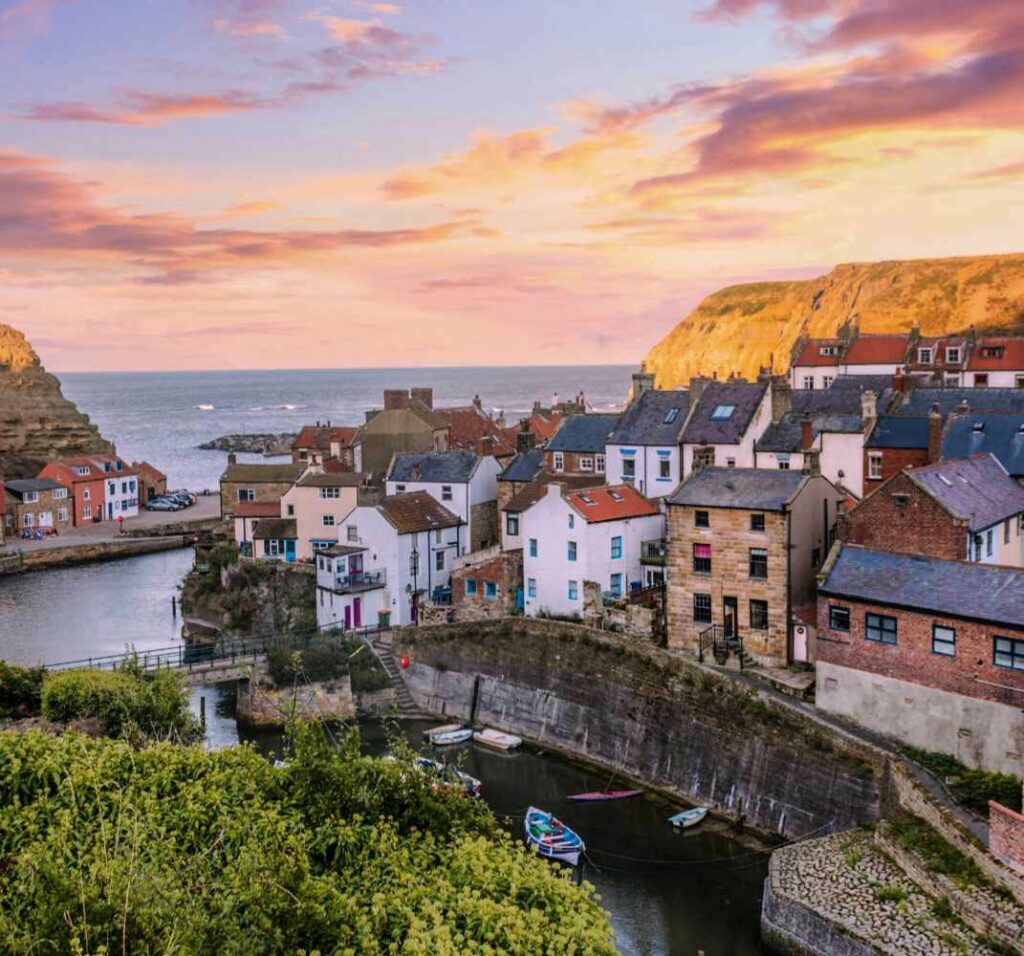
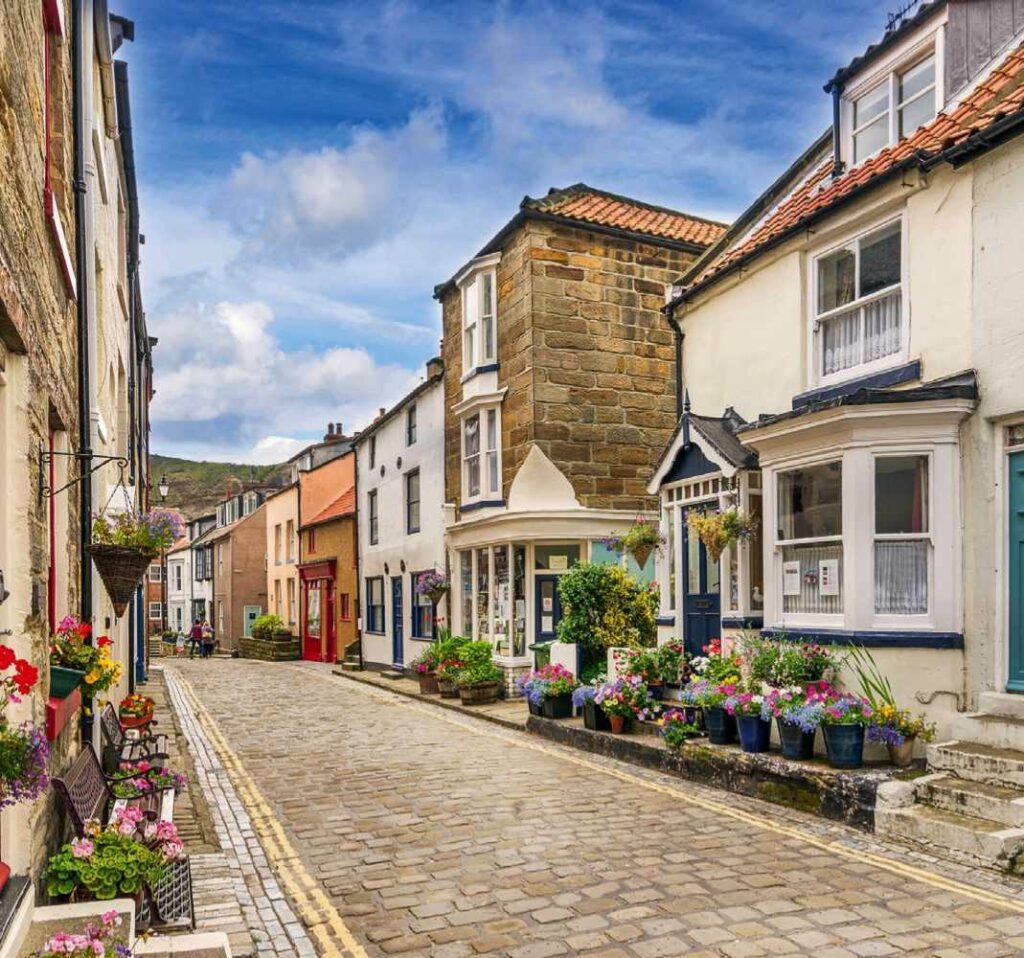
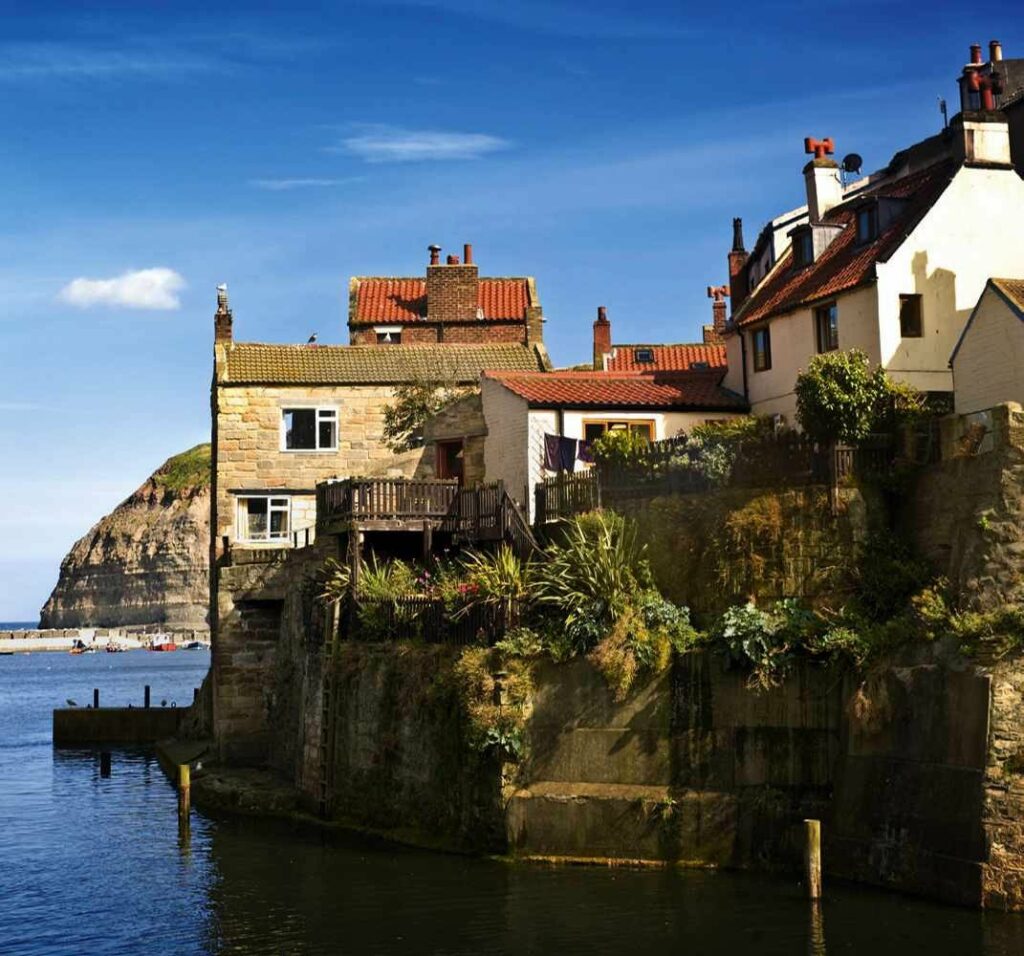
There’s a sort of unreality to Staithes – it’s as if it were someone’s dream of a fishing village. Red-roofed cottages tumble down to the harbour and to broad Staithes Beck as it forces its way around imposing cliffs and out to sea. One sinuous line of old dwellings seems so irretrievably trapped between the river and a headland that they begin desperately climbing the cliffs looking for a way of escape.
And rather than making do with one seaward landing place, or ‘staithe’, Staithes has two, hence the name.
There’s so much to photograph in such a compact space that it’s difficult to know where to begin. Down at the harbour, perhaps, where fishing boats still seek shelter from the vicissitudes of the North Sea? On the slender cobbled streets flanked with colourful terraced houses? Or on the path near
Cowbar Bank, whose view down onto old Staithes is frequently sited as one of the finest in England? If only all dilemmas were as pleasurable.
Housed in a former Methodist chapel, Staithes Heritage Centre brings the history of the village to life and tells the story of Captain Cook, who served his apprenticeship there.
Also nearby: Wander along the coast path to sheltered Runswick Bay – a photogenic half-moon of cliffs, expansive, wide beach with rockpools at low tide and eponymous fishing village. This last has so many second homes and holiday lets that most of the year its picturesque narrow streets and vertiginous steps take on the feel of an abandoned film set.
Useful info
• yorkshire.com/staithes
• staithes-museum.org.uk
8 Llyn Y Fan Fach, Carmarthenshire
Lake views
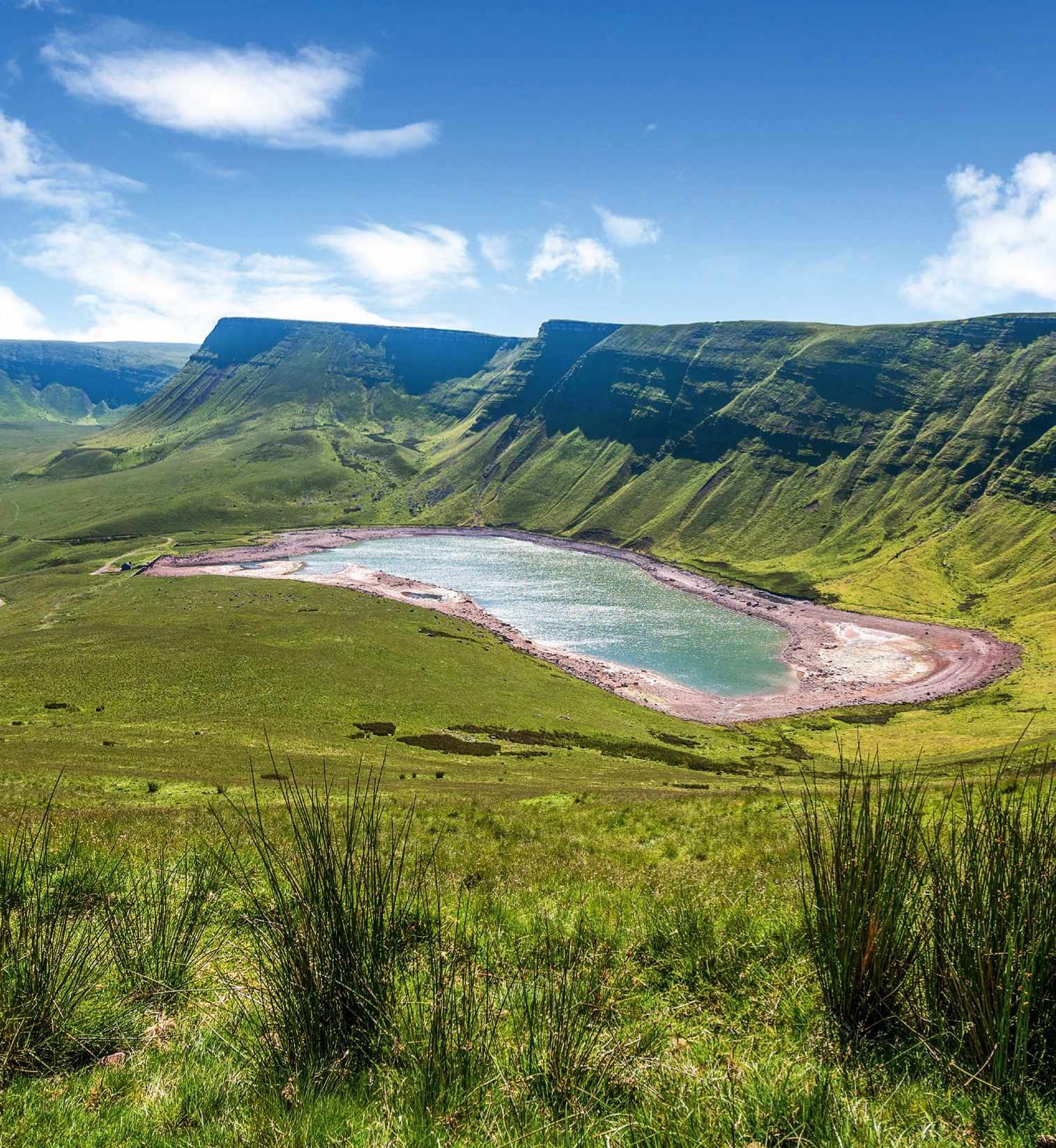
Walk the Beacons Way or the Cambrian Way to the northern edge of the Black Mountain and you will be rewarded with the sight of one of Britain’s most dramatic landscapes. Llyn y Fan Fach is a cwm, or glacial lake, lying in a hollow 500m up in a pleasingly remote corner of Bannau Brycheiniog (Brecon Beacons National Park).
Overlooked by several peaks, including Picws Du and Waun Lefrith, glittering Llyn y Fan Fach is equally photogenic shot from its shore or from the bridleway that skirts the top of the billowing ridge above.
The lake is the subject of a curious local legend. A young fairy princess is said to have emerged from it one day and married a young local farmer on the understanding that he wouldn’t hit her three times. Years later, he did just that, so she returned to the lake, leaving her sons behind but taking her team of oxen with her.
Nearby you can also take a ride on the Heart of Wales, one of Britain’s finest railway lines. Trains take the 90 scenic miles from Shropshire’s Craven Arms to Llanelli in Carmarthenshire at an agreeably relaxed pace. Also nearby: Dan-yr-Ogof The National Showcaves Centre for Wales offers not only a series of stunning subterranean caverns but also a dinosaur park, a Victorian farm, an Iron Age village and a shire horse centre, where you can meet representatives of a breed whose misfortune it has been to be found useful to humans.
Useful info
• Visit the National Park website: bannau.wales
• Find the railway timetable at: heart-of-wales.co.uk
• showcaves.co.uk
9 Angel of the North, Tyne and Wear
Iconic art
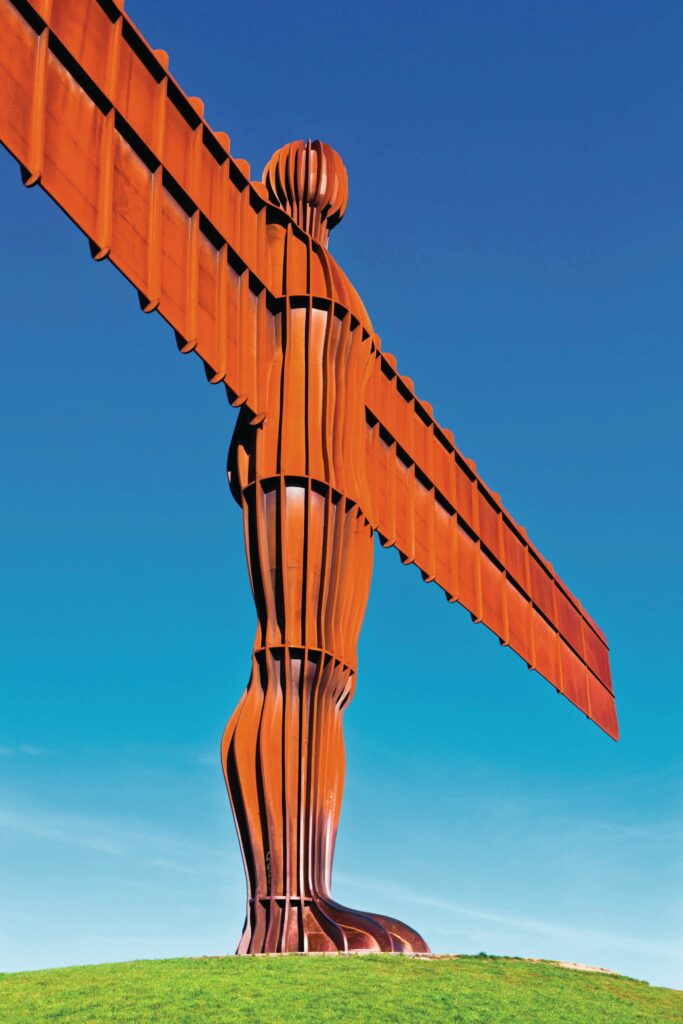
When Anthony Gormley’s gargantuan statue was installed in 1998, it quickly became one of the nation’s best-known pieces of public art. Keeping watch over drivers heading along the A1 and A167 near Gateshead, the angel’s wings stretch further than those of many commercial aircraft. The wings also appear far too heavy not to crash to the ground. Let’s hope they never do because the 20m-high statue weighs a thumping 208 tonnes. And therein lies the secret of its lasting popularity: when you look at it, you can’t quite believe what you’re seeing.
Among other things, Gormley intended the angel to remind people of the generations of miners who worked in the ground below it for 200 years. It’s certainly easy to forget that on the grassy hummock on which the statue stands.
Parking is limited so it’s a safer bet to take the 21 bus from Newcastle or Gateshead.
Also nearby: Beamish Open Air Museum presents scenes from different eras, from an 1820s village and a 1900s town to a 1950s farm.
Useful info
10 Chrome Hill, Derbyshire
Mountains in miniature
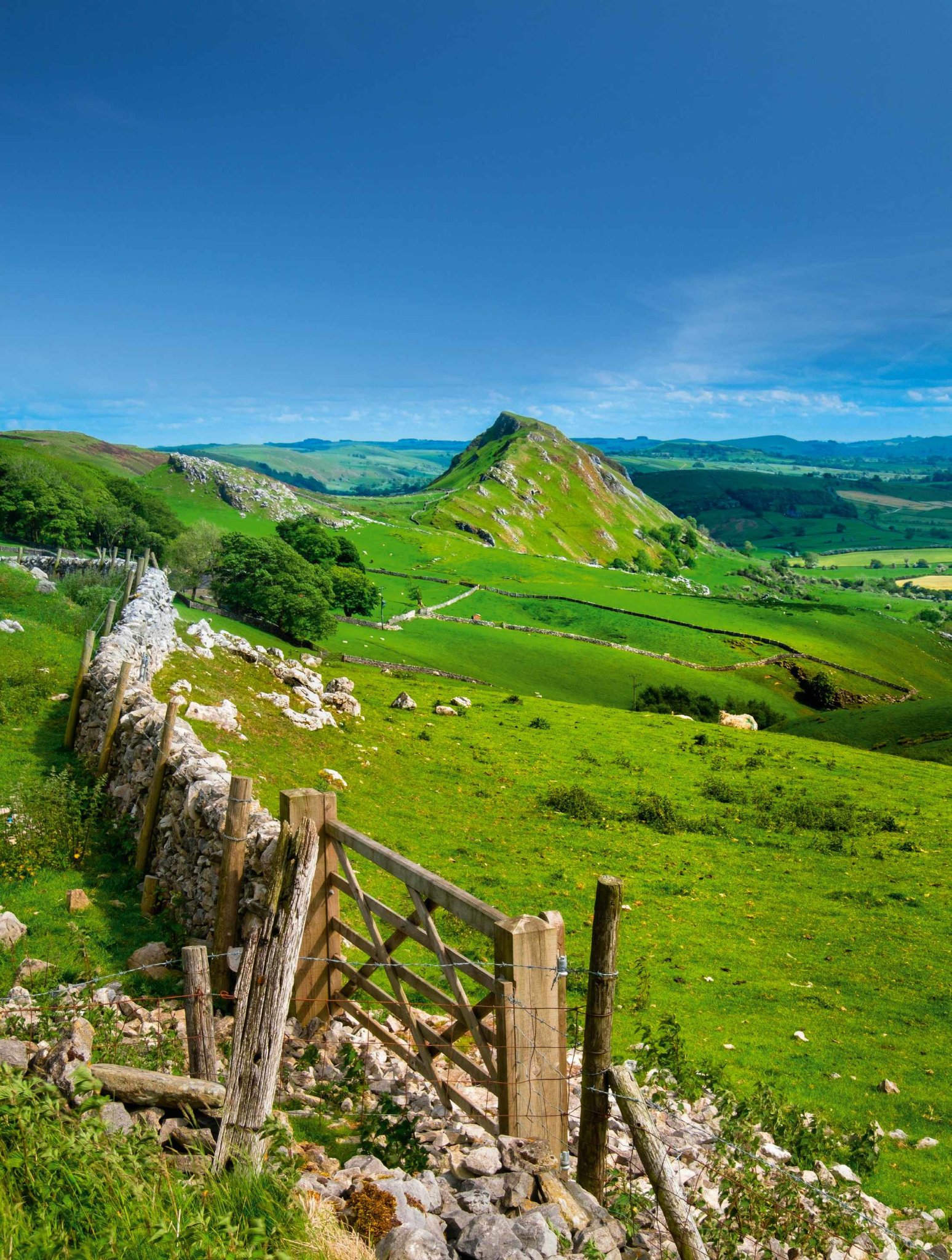
We humans have a peculiar soft spot for things in miniature: kittens, train sets, model villages, the wrinkled faces of newborn babies. Head for the upper Dove Valley in the Peak District and you’ll discover a mini-marvel created by Mother Nature: a tiny mountain range called the Dragon’s Back that rises above a landscape of pasture and meadowland. One of those tiny mountains is Chrome Hill, a limestone reef knoll brought into existence by a foible of geology.
Looking like the plate on the back of a stegosaurus, the hill is an area of open-access land only reachable via a footpath (so there’s no risk of stray cars spoiling your pics). Stand near the foot of neighbouring Parkhouse Hill and you may even get two chances to photograph a sunset on the same evening.
Our solar system’s trusty star dips below the summit of Chrome Hill only to reappear soon afterwards at its foot to set for a second time. The phenomenon is particularly striking around the summer solstice.
Nearby is Buxton’s Pavilion Gardens, with its 9.3 hectares of Grade II-listed Victorian grandeur, an impressive tree sculpture, plus a boating lake and fountains for practising those water-feature shots.
Also nearby: You can have a go at time travel at Buxton Museum’s Wonders of the Peak gallery, as well as brushing up on local archaeology, geology, art and history.
Useful info
• visitpeakdistrict.com
• paviliongardens.co.uk
• buxtonmuseumandartgallery.wordpress.com